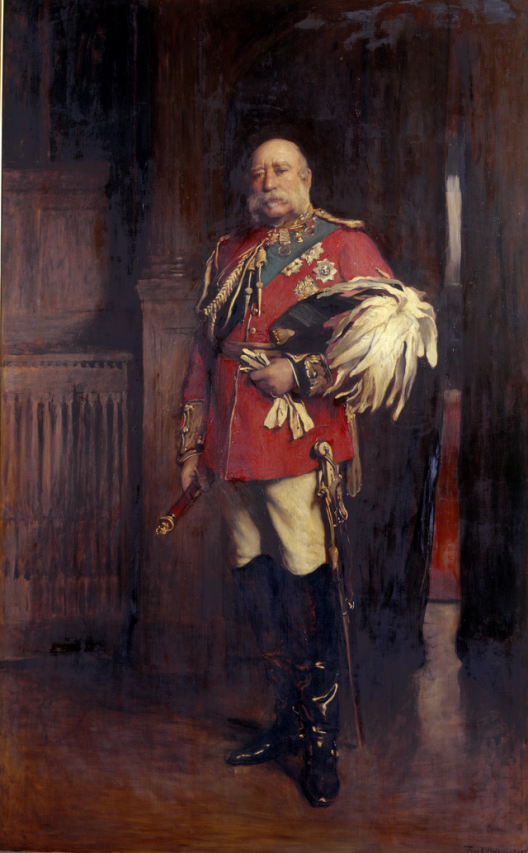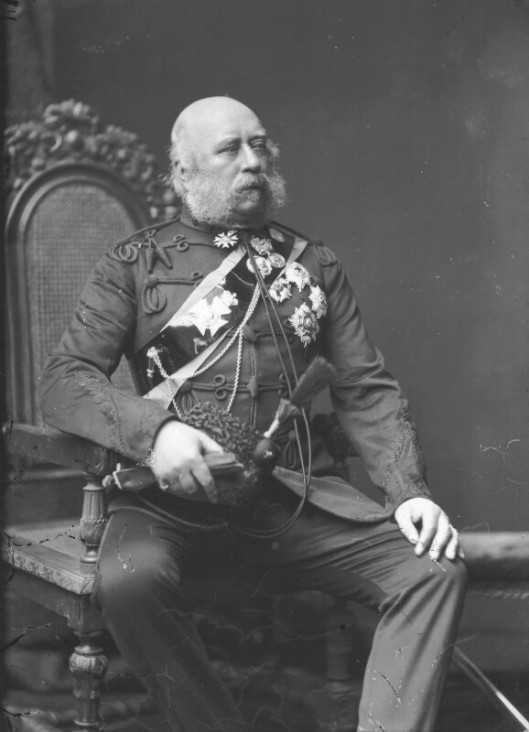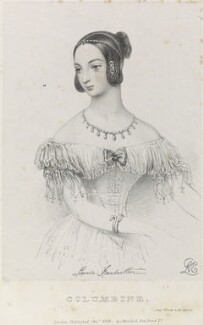Tags
Duke of Cambridge, George III of Great Britain, Louise Fairbrother, Prince Albert of Saxe-Coburg-Gotha, Prince George Duke of Camdridge, Queen Victoria, Queen Victoria of the United Kingdom, Royal Marriages Act of 1772
The new Prince George of Cambridge, son of the Duke and Duchess of Cambridge and currently third in line to the British Throne was not the only Prince George of Cambridge. The first prince of that name was the Grandson of King George III and son of Adolphus-Frederick, Duke of Cambridge and his wife, Princess Augusta of Hesse-Kassel. Prince George of Cambridge was also the uncle to Queen Mary, consort to King George V of Great Britain. He was also first Cousin to Queen Victoria.

George became Duke of Cambridge in 1850 with the death of his father. The Duke was an army officer by profession and served as served as Commander-in-Chief of the Forces (military head of the British Army) from 1856 to 1895. He became Duke of Cambridge in 1850 and field marshal in 1862. At one point in his life his uncle, King William IV and his father Adolphus-Frederick, Duke of Cambridge, wanted to see him marry the future Queen Victoria. Both Prince George and Queen Victoria were born in 1819 with George being a few months older. However, the Coburg side of the family, especially Victoria’s maternal uncle, King Leopold I of the Belgians, had other plans for her marriage. It was the plans of the Belgian king that won out as Victoria fell in love and married her maternal first cousin, Prince Albert of Saxe-Coburg-Gotha.

Prince George seemed to have inherited the love of the ladies like his father and other Hanoverian uncles. He seemed to have a string of mistresses and lovers even after his marriage which was not in accord with the 1772 Royal Marriages Act. According to the Act permission from the monarch was necessary for the marriage to be legal. George did not seek such permission. George did not believe in arranged marriages and felt that they were doomed to failure. Even though his marriage was not legally recognized he did marry at St. John’s Church, Sarah Fairbrother (1816–12 January 1890), the daughter of John Fairbrother, a servant in Westminster.

Sarah Fairbrother
George and Sarah had three children but because the marriage was in violation of the 1772 Royal Marriages Act none of the children were able to succeed to the Duke’s titles. Indeed, Sarah’s very existence was ignored by the Queen Victoria. Instead, Sarah called herself “Mrs. Fairbrother” and eventually “Mrs. FitzGeorge.” FitzGeorge was the name the children also took. Despite this “marriage” George had many other affairs during his life time.
His prominent military career that ended in 1895 after George criticised the administration of the War Office. He was then asked to resign. He outlived Queen Victoria but rode in a carriage in her funeral due to his own poor health. He visited Germany for the last time in 1903 and in 1904 he died of a haemorrhage of the stomach. His remains were buried five days later next to those of Mrs. FitzGeorge in Kensal Green Cemetery London.
His title, Duke of Cambridge, became extinct until it was recreated 107 years later for Prince William of Wales, George’s great-great-great-great nephew.
